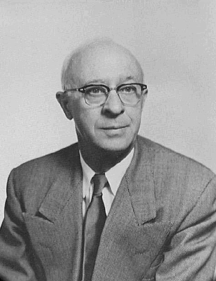 1894-1971
1894-1971
S.W. (Tom) Mead retired in 1962, after thirty eight years of teaching and research in the field of Dairy Science. He gained early experience in dairying from his father, a businessman and dairyman in Greenwich, Connecticut.
He received his BS from Connecticut Agricultural College at Storrs in 1917, then served with the 27th Infantry Division in France. In 1920, Tom earned his MS in Dairy Production at the University of Minnesota where he acquired a knowledge and love of the rigorous and exacting scientific method of inquiry that characterized his research and teaching career.
Tom joined the faculty of the Dairy department of the New Jersey Agricultural College at Rutgers in 1920. In 1922, He became head of the Dairy department. When he came to the UC Davis Department of Animal Husbandry in 1924 he brought with him the 3 bulls and 31 cows that constituted the Jersey breeding experiment begun in 1918 by Bill Regan. This project was one of the pioneer scientific investigations into the inbreeding of large animals. His research dealt with genetics, nutrition, nutritive value of by-product feeds, causes of bloat, growth, the role of roughage in ruminant nutrition, management factors related to mastitis, artificial insemination, and reproductive physiology. This research provided the data for over sixty scientific papers authored or coauthored by Mead.
Tom Mead was a dedicated teacher. His warmth, sensitivity, and personal concern for students enabled him to communicate his enthusiasm and knowledge in animal science very effectively. He organized and conducted short courses of an Extension nature long before this type of adult education became prevalent. He was also a sought-after dairy cattle judge. His integrity and wisdom made him a valuable member of the University faculty.
He served on an advisory committee to the US Department of Agriculture, on the National Research Council Committee on Dairy Cattle Nutrition, on a special committee of the National Purebred Dairy Cattle Association for the evaluation of dairy breeding research, and as chairman of the production section of the American Dairy Science Association. He was closely identified with the establishment of artificial breeding of dairy cattle in California. He provided technical guidance to several pioneer organizations in this field.
